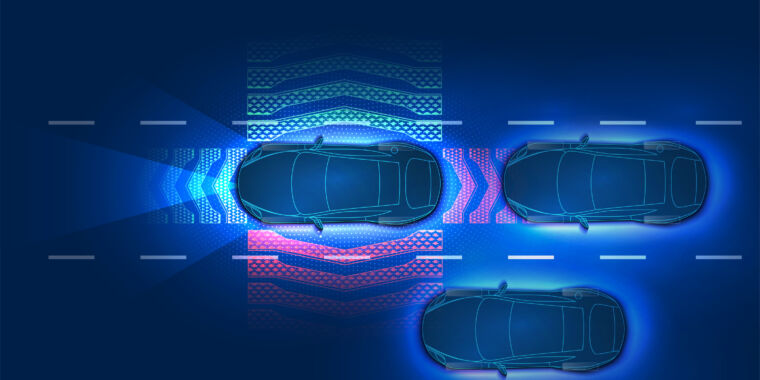Nearly half of Americans say they’ll never get in a self-driving taxi - 4 minutes read
 Robotaxis have a real public image problem, according to new survey data collected by an industry group. Partners for Automated Vehicle Education surveyed 1,200 Americans earlier this year and found that 48 percent of Americans say they would "never get in a taxi or ride-share vehicle that was being driven autonomously." And slightly more Americans—20 percent versus 18 percent—think autonomous vehicles will never be safe compared to those who say they'd put their names down on a waiting list to get a ride in an autonomous vehicle.
Robotaxis have a real public image problem, according to new survey data collected by an industry group. Partners for Automated Vehicle Education surveyed 1,200 Americans earlier this year and found that 48 percent of Americans say they would "never get in a taxi or ride-share vehicle that was being driven autonomously." And slightly more Americans—20 percent versus 18 percent—think autonomous vehicles will never be safe compared to those who say they'd put their names down on a waiting list to get a ride in an autonomous vehicle.PAVE says its data doesn't reflect skepticism or fear based on the killing of a pedestrian by one of Uber's autonomous vehicles, nor the series of drivers killed while using Tesla's Autopilot. In fact, those events don't even register with much of the population. Fifty-one percent said they knew nothing at all about the death of Elaine Herzberg in Arizona, and a further 37 percent only knew a little about the Uber death. Similar numbers said they knew nothing at all (49 percent) or very little (38 percent) about Tesla Autopilot deaths. But those who reported knowing a lot about the deaths were more likely to tell the survey they thought autonomous vehicles were safe now.
According to the survey data, getting a ride in a robotaxi might change some of those minds. Three in five said that they'd have more trust in autonomous vehicles if they had a better understanding of how those vehicles worked, and 58 percent said that firsthand experience—i.e. going for a ride in a self-driving car—would make them trust the technology more.
Trust in ADAS is higher
By contrast, many more Americans have confidence in what are known as advanced driver assistance systems, or ADAS—these can include systems like Tesla's Autopilot and General Motors' Super Cruise but also encompass technology like automatic emergency braking, blind spot monitoring, and parking assists. Of the 1,200 survey respondents, 678 reported owning an ADAS-equipped vehicle, and three-quarters of them said they "will feel safer on the road when I know that most other vehicles have enhanced safety features," with the same number saying they are eager to see what new safety features will be on their next vehicle.
In general, there was a high level of skepticism over broad terms like "driverless car," "autonomous vehicle," and "self-driving car," although individuals with ADAS-equipped cars were much more favorable to specific technologies like remote parking, and nearly one in two (48 percent) said that their vehicle's safety systems had prevented a collision, although PAVE does point out that some of the survey respondents may have been referring to other systems like antilock brakes.
Interestingly, drivers who own cars with forward collision warning (FCW), blind spot monitoring (BSM), lane departure warning (LDW), and automatic emergency braking (AEB) were also more likely to believe that safe autonomous vehicles would be available within the next 10 years compared to those without those features. (FCW: 73 versus 58 percent; BSM, LDW: 73 versus 59 percent; AEB: 70 versus 59 percent.)
Do people really understand their own cars?
However, PAVE points out some reasons to take those ADAS claims with a grain of salt. When asked if it is possible "to own a completely driverless vehicle today," 59 percent of those with remote parking systems, 47 percent of those with driver monitoring systems, and 44 percent of those with automatic emergency braking replied that it was. In fact, there are no completely driverless vehicles available for sale today, and companies that are developing such systems are not planning to sell systems to consumers but instead plan to operate fleets of robotaxis.
Further, PAVE notes that there's probably a lot of confusion among drivers, as 38 percent of respondents claimed to have a vehicle with adaptive cruise control even though the actual market prevalence in 2018 was just 12 percent. And 39 percent said they were confused by all the different names used to market ADAS features, confirming work we reported on in 2019
PAVE points out that confusion about ADAS and autonomous driving "is incredibly dangerous and warrants immediate attention," and the organization suggests that the industry should simplify and standardize the ways it discusses and describes such features and technology. As a publication that covers this topic, that would certainly make our lives easier.
Source: Ars Technica
Powered by NewsAPI.org